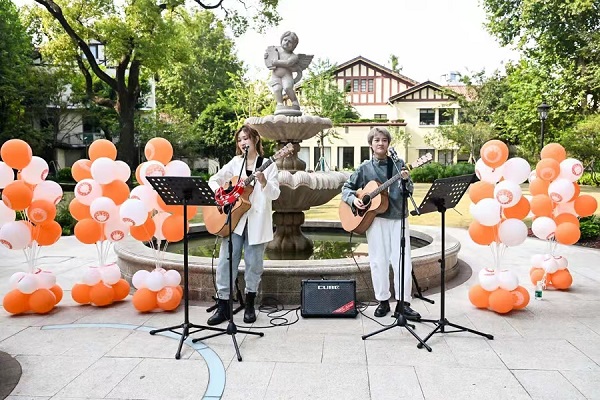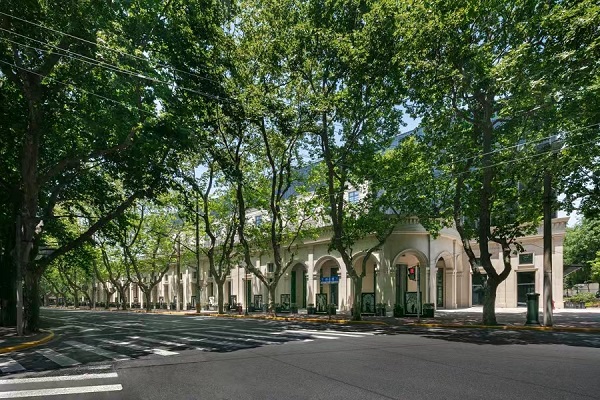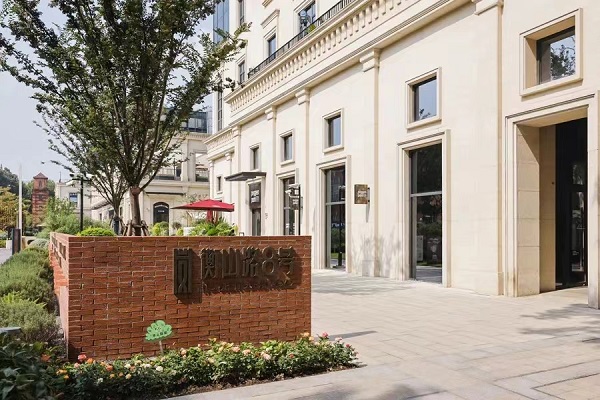Revisiting Shanghai's Hengshan Road: Fusion of history, culture, and music
Hengshan Road in Xuhui district, Shanghai, is renowned for its bustling bar scene, but it has undergone significant transformations in recent years.

A view of Hengshan Road in Shanghai's Xuhui district. [Photo/WeChat account: shobserver]
Stretching approximately 2.2 kilometers, Hengshan Road is often referred to as "Shanghai's Champs-Élysées", serving as an extension of the Xujiahui commercial zone with a focus on leisure and tourism.
The implementation of the "Hengshan Road - Fuxing Road Historical and Cultural Heritage Protection Plan" in 2004 has brought about a scientific and systematic approach to preserving the area's historical charm.
The night-time economy on Hengshan Road is still thriving, with peak times seeing a multitude of bars lining the street, creating vibrant nightlife scenes such as the "bar cluster" at the junction of Gao'an Road, Hengshan Road, and Yongjia Road.
With the opening of prominent establishments like Jinhe Yuejie at No 8 Hengshan Road, a landmark in Hengfu historical and cultural zone, flagship stores of international brands on Dongping Road, and the Zhihe Kaifen Garden along No 2 Hengshan Road, Hengshan Road has been propelled into a new phase of development.
At the heart of this revival is the "Hengfu Music Block", encompassing six historic street areas and spanning over 254,000 square meters. This block is reawakening the urban charm of Hengshan Road and its surrounding areas, creating a nightlife scene that grows more enchanting with each passing night.

A live performance on Hengshan Road in Shanghai's Xuhui district. [Photo/WeChat account: shobserver]
When matching suitable formats for urban renewal projects, the Xuhui district authorities have identified a rich musical heritage area that is formed by Fenyang Road, Yueyang Road, Dongping Road, Hengshan Road, Baoqing Road, and Middle Huaihai Road.
This area houses historical landmarks like the former residences of Nie Er, a famous composer and musician; Qu Qiubai, a Communist Party of China leader who helped establish Chinese sociology and linguistics in the early 20th century; and Yuan Xuefen, a prominent performer of Yueju Opera. It also houses professional music institutions such as the Shanghai Conservatory of Music, the Shanghai Symphony Orchestra, the Shanghai Opera House, and the Shanghai Symphony Museum, thus creating a hub for music history and talent in the city.
The Hengfu Music Block is designed to accommodate leisurely walks, allowing visitors to explore its main landmarks in a day. In addition to professional performance venues like the Shanghai Opera House and Shanghai Symphony Hall, it also features a mix of new and old buildings in commercial and office parks.
Presently, the Hengfu Music Block boasts 49 historical buildings, showcasing modernist, English, French, and Spanish architectural styles. Notable sites include the Shanghai American School, established in 1912 and a water tower built in 1922. The well-preserved Garden of the Sheng Family covers an area of 4,500 square meters in the music block. It is known for harmoniously blending new structures into its surroundings to create a distinctive cultural and creative park.

A view of Hengshan Road in Shanghai's Xuhui district. [Photo/WeChat account: shobserver]
Wang Xingquan, a researcher at the Information Research Institute of the Shanghai Academy of Social Sciences, said that preserved and renovated cultural districts often attract trendy youth and tourists. They also tend to become hubs for fashion and avant-garde art performances.
In Shanghai, the well-preserved historical buildings within the Hengfu historical and cultural zone have transformed into tourist destinations, art communities, and popular spots for social media influencers. This area blends business, travel, and culture, making it appealing for visitors and professionals alike, Wang said.
Projects like the Blackstone Apartments and No 8 Hengshan Road incorporate excellent historical architecture, while also catering to commercial, office and cultural functions. This model meets the diverse leisure lifestyles and nighttime consumption needs of the populace and creates new destinations that elevate the charm of Shanghai at night.

A view of No 8 Hengshan Road in Shanghai's Xuhui district. [Photo/WeChat account: shobserver]
In 2021, the Hengfu Music Block was recognized as one of the first national-level nighttime cultural and tourism consumption hubs, and it is now gradually evolving into a hub for the music industry, thanks to its incorporation of performances, education, exchanges and consumption functions.
Currently, the block features a variety of music-related businesses, music shops, training centers, music-themed restaurants, as well as bars and cafes, creating a vibrant atmosphere that is perfect for leisurely nighttime activities.
Source: "shobserver" WeChat account